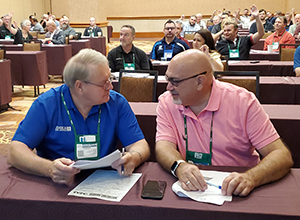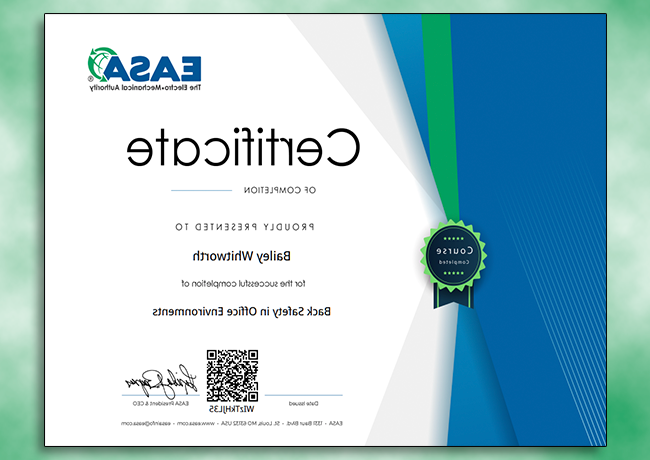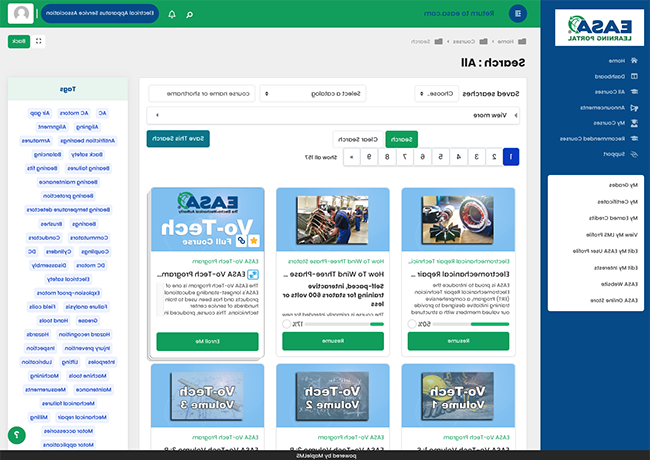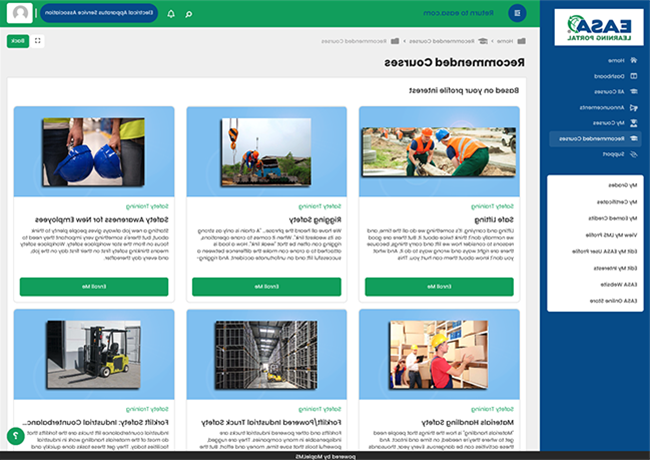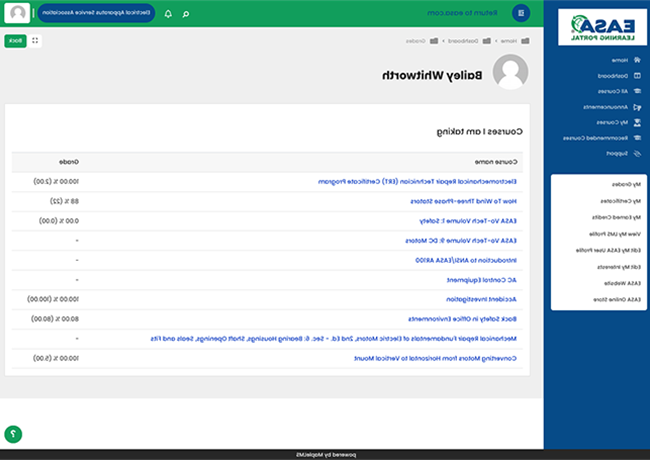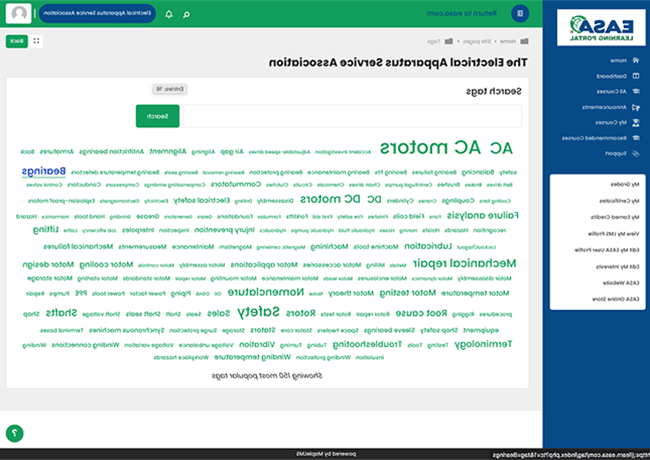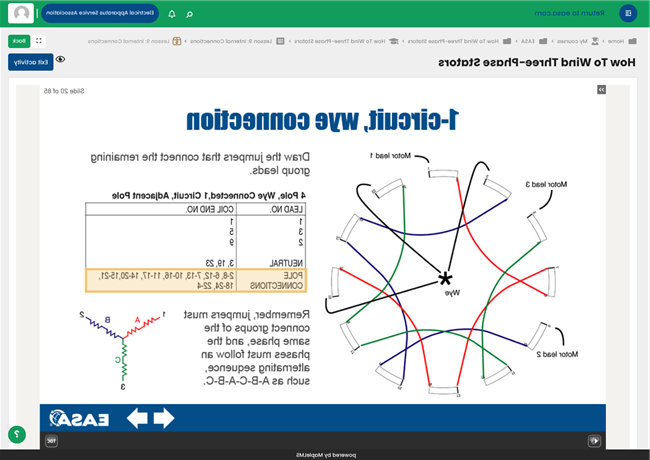EASA Learning Center
NOW AVAILABLE
Industry-specific online training
available 24/7/365
For an incredibly low cost, you can now provide employees with 12 months of access to much of EASA's training without leaving the service center!
Highlights
- Sold as a 12-month subscription and provides access to all content.
(Details below) - Training targets all employees of all skill levels.
- Purchase online for instant access.
(Requires logout and login for correct permissions to be assigned) - Each subscription licenses one "seat" within the EASA Learning Center.
- The number of seats purchased determines how many students can train concurrently. Need to train more than one at a same time? Buy additional subscriptions.
(Note: Any coursework completed or credits/certificates earned are tied directly to the student currently holding a valid subscription. When sharing a licensed seat(s) among multiple students, the licensed seat(s) must be reassigned before the new student can begin earning credits/certificates under their name. Do not share logins. Logins are unique to each individual. Sharing a login will result in all credits/certificates being granted to one individual.) - Employers can move students in and out of seats during an active subscription period.**
(Not applicable to the ERT Certificate Program, contact EASA Member Services for assistance) - Details about completed courses are automatically copied into the students' My EASA account.
- Primary contacts can view and download information about their their employees' completed courses ... FREE ... No subscription required!
(Course name, Start date, Completion date, Certificate issue date, Time spent in course, Score, Score percentage, Score range, Credits earned) - Technical and safety content licensed from TPC Training reviewed and selected by EASA's Technical Education Committee.
- EASA has negotiated steep discounts on behalf of our members for third-party training costing thousands elsewhere.
Use of a laptop/desktop or tablet is highly recommended for the best experience.
All learning content is presented in English.
Comparison of Subscription Options
| General Learning Library | ERT Certificate Program LEARN MORE |
Company Manager/Reporter† | |
|---|---|---|---|
| EASA member price | $599* per seat per year |
$799* per seat per year |
$59* per seat per year |
| Nonmember price | $1199* per seat per year |
$1598* per seat per year |
$149* per seat per year |
| Approximate hours of available training | 480 | 480 | 0 |
| Hours of required training | N/A | 151 | N/A |
| Approximate cost per hour of available training (member/nonmember) |
$1.25 / $2.50 | $1.66 / $3.33 | N/A |
| Students can be moved in and out of licensed seat(s) online at any point during subscription period** (Note: You have 2 weeks after purchase to assign a student to an ERT Certificate seat. After that time no changes can be made. In the event an ERT Certificate candidate leaves their company, a manager may contact EASA Member Services for a special exemption to reassign remaining portion of subscription to a new student) |
 |
||
| EASA Seminars Video presentations with quizzes
|
 |
 |
|
| EASA Vo-Tech (9 courses, 182 lessons, 135 hours) Note: Printed version of this training no longer available. |
 |
 |
|
| EASA's How to Wind Three-Phase Stators*** (13 lessons, 8-10 hours) |
 |
 |
|
| Introduction to ANSI/EASA AR100 (1 hour) |
 |
 |
|
| Introduction to the EASA/AEMT Good Practice Guide to Maintain Motor Efficiency (1 hour) |
 |
 |
|
| Technical courses licensed from TPC Training (27 courses, 195 lessons, 189 hours) Details below |
 |
 |
|
| Safety courses licensed from TPC Training (21 courses, approx. 24.5 hours) Details below |
 |
 |
|
| EASA Online Sales Training Videos*** (11 courses, 13.5 hours) |
 |
 |
|
| Access to select EASA webinar recordings and related quizzes |  |
 |
|
| Ability to earn Certificates of Completion, EASA CEUs |  |
 |
|
| Instant access to new courses as they become available |  |
 |
|
| Provides structured training path for onboarding general electromechanical repair technicians |  |
||
| Access to special on-the-job training checklist |  |
||
| Ability to earn EASA's Electromechancial Repair Technician (ERT) Certificate |  |
||
| Online recognition of ERT Certificate awardees |  |
||
| Recognition of ERT Certificate employees as part of EASA online company profile |  |
||
|
Ability to view additional details and progress reports (complete and incomplete courses) for employees at your business location** †
Note: At this time, company manager/reporter and employees must belong to the same company location within EASA's database. Company manager/reporter subscription will not allow for viewing employees from multi-location companies. |
 |
* All subscriptions are nonrefundable
** Any coursework completed or credits/certificates earned are tied directly to the student currently holding a valid subscription. When sharing a licensed seat(s) among multiple students, the licensed seat(s) must be reassigned before the new student can begin earning credits/certificates under their name. Do not share logins. Logins are unique to each individual. Sharing a login will result in all credits/certificates being granted to one individual. NOTE: The ability to reassign licensed seats is restricted to those who have a company within EASA's database and all students must be from that same company location.
*** EASA's How To Wind Three-Phase Stators and EASA's Online Sales Training videos will no longer be available as standalone products outside the EASA Learning Center. Companies that have previously purchased the standalone products will continue to have access to them outside of the EASA Learning Center.
† Primary contacts will have FREE access to view details for courses completed by their employees within their My EASA account pages. No subscription required. Information available for free regarding completed courses includes: course name, start date, completion date, certificate issue date, time spent in course, score, score percentage, score range, and credits earned. Those with a company manager/reporter subscription will also have access as part of their subscription. At this time, the primary contact, company manager/reporter and employees must all belong to the same company location within EASA's database.
Summary of Courses Licensed From TPC Training
Technical Training
Each lesson is approximately 1 hour
- AC Control Equipment – 10 lessons
- Basic Hydraulics – 10 lessons
- Basic Milling Procedures – 5 lessons
- Basic Pneumatics – 10 lessons
- Digital Logic Systems – 5 lessons
- Electrical Troubleshooting – 10 lessons
- Equipment Installation – 5 lessons
- Hydraulic Troubleshooting – 10 lessons
- Indexed Milling Procedures – 5 lessons
- Installing and Replacing Bearings and Shaft Seals – 5 lessons
- Lathe Turning Work Between Centers – 5 lessons
- Lathe—Machining Work in a Chuck - 5 lessons
- Lubricants and Lubrication – 10 lessons
- Machine Shop Job Analysis – 5 lessons
- Machine Shop Practices – 6 lessons
- Machine Shop Shaping Operations – 5 lessons
- Machine Shop Turning Operations – 5 lessons
- Mechanical and Fluid Drive Systems – 5 lessons
- Mechanical Drive Maintenance – 5 lessons
- Metals in the Plant – 10 lessons
- Multiple Machine Procedures – 5 lessons
- Pneumatic Troubleshooting – 10 lessons
- Power Supplies – 6 lessons
- Programmable Logic Controllers – 7 lessons
- Pump Installation and Maintenance – 5 lessons
- Pumps – 10 lessons
- Variable Frequency Drives – 10 lessons
Safety Training
Each course is approximately 20-35 minutes
- Accident Investigation
- Arc Flash
- Back Safety in Industrial Environments
- Back Safety in Office Environments
- Chemical Hazards - OSHA'S Hazard Communication Standard
- Electrical Safety
- Electrical Safety and Protection
- Electrical Safety in the Workplace—Understanding NFPA 70E®
- Forklift Safety: Industrial Counterbalance Lift Trucks
- Forklift/Powered Industrial Truck Safety
- Hand and Power Tool Safety
- Hazard Recognition
- Introduction to GHS: The Globally Harmonized System
- Lead Exposure in General Industry
- Lock Out/Tag Out
- Machine Guard Safety
- Materials Handling Safety
- Rigging Safety
- Safe Lifting
- Safety Awareness for New Employees
- Welding Safety
EASA Vo-Tech Program
Volume 1: Safety
This course explains government involvement in ensuring a safe workplace and discusses safety in various maintenance situations, personal protective equipment and fire safety. It also covers techniques and safeguards in the use of rope, chain, hoists, and scaffolding when moving heavy plant equipment and maintaining plant utilities.
Duration: Approx. 19 hours
- Introduction to Safety and Health
- Government Safety and Health Regulations
- Personal Protective Equipment
- Chemical Safety
- Tool Safety
- Material Handling
- Working Safely with Machinery
- Working Safely with Electricity
- Electrical Equipment Safety
- Fire Safety
- Protecting Your Health
- A Safe Work Environment
- Introduction to Industrial Rigging
- Wire Rope and Wire-Rope Slings
- Chain and Metal-Mesh Slings
- Fiber Rope and Webbing Slings
- Industrial Hoists and Cranes
- Operating Practices
- Scaffolds and Ladders
Volume 2 - Basic Shop Skills 1
This course begins by introducing mathematical basics—numbers and numerals, subtraction, addition, multiplication, and division. It examines common fractions and decimal fractions, ratios and proportions, powers and roots, and discusses the calculator and its usage. It moves on to cover geometry, algebra, and formulas for problem solving. It finishes by covering units of measurement used in commercial and industrial applications including accuracy and tolerance.
Duration: Approx. 18 hours
- Whole Numbers
- Common Fractions
- Decmal Fractions
- Ratios and Proportions
- Powers and Roots
- Calculators
- Geometry
- Algebra
- Using Formulas
- Units of Measurement
- Metric Measurement
- Linear Measurement
- Comparison and Surface Measurement
- Measuring Motion
- Measuring Forces
- Measuring Temperature
- Measuring Fluids
- Measuring Electricity
Volume 3 - Basic Shop Skills 2
This course introduces the student to nonmetal materials, reading blueprints and general troubleshooting skills. Nonmetal materials describes how they are most frequently used, their properties, characteristics, and classifications. It also covers synthetic and natural materials. Reading blueprints covers all types of blueprints used in industrial plants. It discusses reading blueprints outlining machine parts and machine drawings, and examines pneumatic, piping, plumbing, and electrical drawings. This course also explores the subject of troubleshooting and the importance of proper maintenance procedures.
Duration: Approx. 18 hours
- Introduction to Nonmetals
- Paints and Coatings
- Industrial Chemicals
- Carbon
- Introduction to Blueprints
- Machine Parts
- Machine Drawings
- Piping and Plumbing Drawings
- Electrical Drawings
- Sketching
- Introduction to Troubleshooting
- Working with People
- Troubleshooting Techniques
- Aids to Troubleshooting
- Preparing for Troubleshooting
- Using Schematics and Diagrams
- Solving Mechanical Problems
- Solving Electrical Problems
Volume 4 - Basic Electricity 1
This course covers a basic, non-mathematical approach to understanding principles of electricity. It introduces electron theory, static electricity, electrons in motion, and magnetism. It also covers basic methods of measuring current, voltage, and resistance during electrical troubleshooting procedures; and explains circuit components-conductors, insulators, resistors, capacitors-and simple Ohm's Law calculations for DC and AC circuits.
Duration: Approx. 15 hours
- Introduction to Electricity
- Static Electricity
- Current Electricity
- Magnetism
- Current, Resistance and Potential Difference
- Electrical Components
- Conductors
- DC Circuits
- AC Circuits
- Electronics
- Solving Problems in DC Circuits
- DC Series Circuits
- Parallel Circuits
- Series-Parallel Circuits
- DC Circuits in Use
Volume 5 - Basic Electricity 2
This course covers differences between DC and AC circuits. Explains AC sine wave, using vectors to solve AC problems, calculating impedance in circuits having inductance, capacitance, and resistance. It also covers the maintenance procedures and principles on which electrical test instruments operate. Basic instruments covered in this online course include voltmeter, ammeter, wattmeter, ohmmeter, megohmmeter and multimeters.
Duration: Approx: 10 hours
- Principles of Alternating Current
- Mathematics in AC Circuits
- Inductance and Inductive Reactance
- Capacitance and Capacitive Reactance
- Impedance
- Three-Phase Circuits
- Principles of D'Arsonval Meters
- Digital Meters
- DC Instruments
- Electrical Resistance
Volume 6 - Basic Mechanics 1
This course covers the most important hand and industrial power tools used on the job. It begins with measuring tools, including a discussion of units of measurement. It examines wrenches and screwdrivers, pipefitting tools, plumbing tools, sheet metalworking tools, machinists' metal-working tools, electric drills, electric hammers, pneumatic drills and hammers, screwdrivers, nutrunners, wrenches, electric sanders, grinders, and shears. It also covers hoisting and pulling tools as well as tool sharpening techniques for selected tools.
Duration: Approx. 14 hours
- Measuring Tools
- Wrenches and Screwdrivers
- Pipefitting Tools
- Plumbing Tools
- Sheet Metalworking Tools
- Metalworking Tools
- Hoisting and Pulling Tools
- Electric Drills
- Electric Hammers
- Pneumatic Drills and Hammers
- Screwdrivers, Nutrunners and Wrenches
- Electric Sanders
- Grinders and Shears
- Tool Sharpening
Volume 7 - Basic Mechanics 2
This course covers belt drives, chain drives, gears and gear drives, adjustable-speed drives, shaft alignment, shaft coupling devices, and clutches and brakes. It also covers principles and applications of various types of bearings, including plain journal, ball, and roller bearings. It explains installation, inspection and maintenance of bearings, as well as specialized bearings, including powdered-metal, nonmetallic, and hydrostatic bearings. It includes information on bearing seals, lubrication, and maintenance practices.
Duration: Approx. 18 hours
- Belt Drives
- Chain Drives
- Gears
- Gear Drives
- Adjustable-Speed Drives
- Shaft Alignment
- Shaft Coupling Devices
- Clutches and Brakes
- Bearings and Shafts
- Plain Journal Bearings
- Antifriction Bearings
- Ball and Roller Bearings
- Specialized Bearings
- Bearing Seals
- Lubrication
- Bearing Maintenance
Volume 8 - AC Motors
This course covers the types and operating principles of common single-phase and three-phase motors. It explains how to identify motor leads on split-phase, capacitor-start, capacitor-run, permanent split capacitor, and repulsion motors. Also covers universal motors, shaded-pole motors, and other special types, including synchro and servo systems. It provides general maintenance procedures on all motors as well as control circuits and combination starters. Troubleshooting is discussed including use of schematic diagrams, determining sequence of operation, use of building diagrams, single-line diagrams, and identifying unmarked leads on three-phase delta and Y-connected motors.
Duration: Approx. 14 hours
- Introduction to Single-Phase Motors
- Split-Phase Motors
- Capacitor Motors
- Repulsion Motors
- Universal Motors
- Special Motors
- Motor Installation
- Motor Maintenance
- Principles of Three-Phase Motors
- Induction Motors
- Synchronous Motors
- Multispeed Motors
- Maintaining Three-Phase Motors
- Troubleshooting DC Motors
- Troubleshooting AC Motors
Volume 9 - DC Motors
This course covers DC power applications in industry, types of DC generators, operating characteristics of DC motors, DC armature principles, and armature maintenance and repair. It includes types of DC relays, DC controllers, overspeed and overload protection, drum and reversing controllers, dynamic braking, DC power supplies, diodes, semiconductors, SCR principles, and DC maintenance practices. Troubleshooting is also discussed.
Duration: Approx. 7 hours
- DC Power in Industry
- DC Electromagnets
- DC Generators
- DC Motors
- DC Armatures
- Maintenance of DC Equipment
Frequently Asked Questions
I just bought a subscription. Why can't I access any courses?
If you just bought a subscription, you may need to logout and login again in order for the proper permissions to be assigned to your user.
I have a subscription. Where do I go to start my learning?
You should have received an email with directions for your next steps. If not, use any of these ways to access the EASA Learning Center ...
| Go to learn.yhysj.net (Hint: bookmark it for quick reference) |
Go to http://yhysj.net/training/online then click on the large orange button. |
Hover over TRAINING in the main navigation menu at yhysj.net, then click on “EASA Learning Center” OR click the orange “GO TO THE LEARNING CENTER” button. |
LOGIN REQUIRED
You must login using your EASA username and password in order for the system to recognize your subscription and other personal information. Do not share your login credentials with others. All course progress, grades and certificates will be credited to the student who is logged in. Once in the EASA Learning Center, click on the icon in the upper right corner; your name should be displayed. Your name should also appear in the “Logged in user” blocks that appear within each course as well as on the home page. If your name is not displayed, stop and contact EASA (learn@yhysj.net).
I have an ERT Certificate Program subscription. How do I access the course?
The ERT Certificate Program is made up of many individual courses from throughout the EASA Learning Center. This brief video will walk you through enrolling in the course and how to access the required components.
Can I use an iPad/tablet to take courses?
Yes, you can take coursework using an iPad or tablet as long as it has a web browser and an internet connection.
If using Safari or Chrome web browsers on an iPad, you may encounter an "Http failure response for http://www.tpcfusion.com/cid/easa/api/courses/play-course: 401 OK" error message.
THE FIX
Safari: iOS
Settings > Safari > Prevent Cross-Site Tracking (Disable)
Chrome: iOS
Settings > Chrome > Allow Cross-Website Tracking (Enable)
Note: We do not recommend using smart phones. Much of the content would appear too small and some third-party licensed courses are not intended for use on such small screens.
Why am I seeing an "Http failure response ..." error message?
If using Safari or Chrome web browsers on an iPad, you may encounter an "Http failure response for http://www.tpcfusion.com/cid/easa/api/courses/play-course: 401 OK" error message.
EASA has licensed content from other organizations and that content is hosted on their servers. Your web browser is blocking traffic between those servers and the EASA Learning Center.
THE FIX
Safari: iOS
Settings > Safari > Prevent Cross-Site Tracking (Disable)
Chrome: iOS
Settings > Chrome > Allow Cross-Website Tracking (Enable)

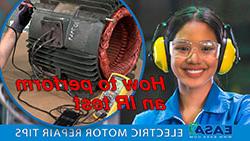 Having trouble finding time for training? Check out the how-to videos in EASA’s new series Electric Motor Repair Tips.
Having trouble finding time for training? Check out the how-to videos in EASA’s new series Electric Motor Repair Tips.
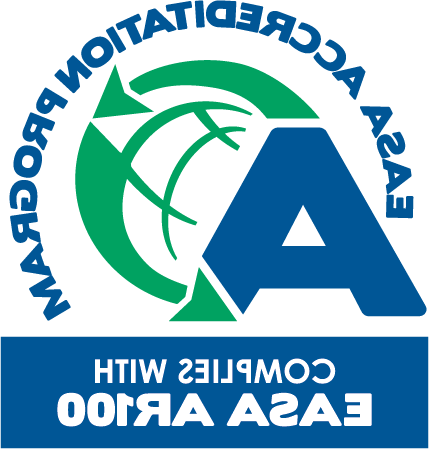
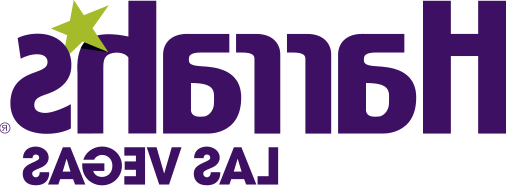 It's not too early to reserve your room at EASA's official 2024 hotel. Don't wait to save your place at the 2024 Convention & Solutions Expo.
It's not too early to reserve your room at EASA's official 2024 hotel. Don't wait to save your place at the 2024 Convention & Solutions Expo.